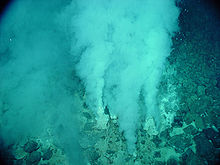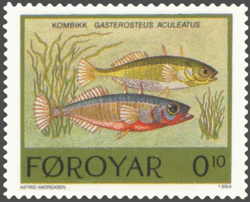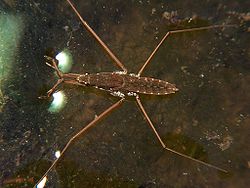Category Archives: New Discoveries
Breaking News: New Snail Larval Form discovered: First since 1978!
Well, just when you are comfortable knowing that what you know is accurate, the world comes along and throws you another curve ball. We used to know there were 9 planets, now there are 8, we used to know the earth was the center of the solar system, now we know better.. Now, just when you thought you pretty much knew your basic zoology, an amazing new discovery has been made that is basically going to force some poor guy to rewrite the molluscan, larval ecology and invertebrate text books.
Between the 1850’s and the 1870’s supposedly all known forms of snail were discovered. However, thanks to modern technology, and some persistent researchers, we now know that we were mistaken, and that the forms of snail are really much more diverse than originally thought.
This new snail larval form is really turning heads, and here’s why. This larval form discovered is the first of its kind to be found to be a free-swimming pre-veliger larva. This is rather interesting because normally they don’t swim freely. Not only that but it appears these new little guys can actually turn hydrogen sulfide, and methane as an energy source.. Imagine, a snail which subsists on farts…
Credited with this astounding discovery are Anders Waren, a Swedish Naturalist from the Royal Museum of Natural History in Stockholm, and collegue Philippe Bouchet.
They have been working on this project since the 1980s, and have finally made their marks on history. These are a pair to watch folks, who knows what they might discover next?
Male Fish Won’t “Ask For Directions”
Recent research has come to the astonishing conclusion that fish, specifically the males, positively refuse to ask for directions when they are breeding.
A recent research project, by the University of St. Andrews, has found that male fish seem to become more anti-social feeders, becoming even more so when they are ready to spawn.
As a result of this, they put themselves in greater peril, by leaving the shoal behind.
The claim is being made by researchers in charge of the project that this is one of the first studies performed that has shown a differences in the sexes when it comes to how animals learn from one another.
The current belief is that this trait is only seen in male fish when they are getting ready to spawn or are spawning, and may correlate to the distinct pressures faced by the sexes when spawning.
The research was conducted by Dr. Mike Webster and Professor Kevin Laland, whose goal was to take a look at the copying and learning behaviors of ninespine stickleback.
It appears the males tend to look for food reserves on their own, so that they can properly protect their young when the time comes, and this is why they don’t feed together.
Dr Webster added: “We are all familiar with the stereotype of males refusing to ask for directions – this might apply to fish too, but only when they are preparing to breed.”
Divers Haul Up Oldest Drinkable Beer From Baltic:
Well now, first it was champagne, now it’s beer.. The Baltic Sea seems to be a fully stocked bar in it’s own right. What’s next? A martini shaken not stirred?
Divers have managed to drag up an astounding find. This past Thursday they drudged up the world’s oldest drinkable beer from a shipwreck in the Baltic Sea this past Thursday, just in time for the weekend. This happens just days after efforts began to bring up cases of 200 year old champagne, officials in the area commented.
“We believe these are by far the world’s oldest bottles of beer,” a spokesman for the local government of Åland, Rainer Juslin, said in a statement.
The bottles of beer were discovered in a shipwreck which is though to be somewhere in the viciniy of 200 years old, as divers were just beginning to bring up bottles of champagne, discovered back in July. One question this reporter begs to ask… Is why the heck have they taken so long to start bringing up the bubbly?
The haul, which was found intact on the seabed somewhere around 50 meters down beneath the waves. The find comes from a wreck believed to have sunk off the coast sometime in the 18th century, officials of Aaland have postulated.
“The constant temperature and light levels have provided optimal conditions for storage, and the pressure in the bottles has prevented any seawater from seeping in through the corks,” a statement this Thurday said.
Researchers Delving into Sea Slug Poison
A group of researchers are going to meet sometime this week, and attempt to delve into the mysterious poison which has been discovered in sea slugs, which have made an appearance on Auckland’s shores this past winter.
This meeting, which was started by the Cawthron Institute, comes as a result of the spreading of the toxic sea slug to an east Auckland beach for the first time.
The sea slugs, known in scientific circles as Pleurobranchaea maculata and generally only 2 cm long, were discovered this past year to contain TTX, tetrodotoxin, a very strong neurotoxin.
This poison is thought to be behind the demise of five dogs on the beaches of North Shore.
There have been no fatalities this past season, however dogs that paid a visit to Torpedo Bay, Narrow Neck, and Milford have become ill.
Gillian Wratt, chief of the Cawthron Institute, has commented that the ability of the sea slug to handle such a potent poison has been a real head scratcher for scientists in Japan for the past 40 some odd years, and it was an excellent time for researchers in New Zealand to study the creature in greater depth.
“The ocean has thrown up this amazingly toxic slug which somehow, somewhere has developed a mechanism to cope with one of the deadliest toxins in the world. And it is right here on our doorstep.”
It was found the slugs got the toxin from their diet, but it isn’t clear yet as to how.. Well, I for one hope that they find a way to deal with the slugs, and not just what makes them tick, for the benefit of the beach goers.
The Conundrum of the Gap in the Spine of the Barbeled Dragonfish Finally Solved
The conundrum of why a particular group of deep sea fish have a gap between their skull and spinal columns has finally been solved by a crack team of researchers, which include representatives from the Natural History Museum.
It appears that the Barbeled Dragonfish also have a number of bones missing which would normally connect their skulls to their spine, and this has been puzzling researcher for quite some time.
There are a total of 28 genera of these fish, which represent over 270 species, and all of them have this same gap. However, are these missing bones always the cause?
An international group of scientists including Dr. Nalani Schnell, of the University of Tubingen; Dr Ralf Britz, of the Natural History Museum; and Dr. David Johnson, of the smithsonian Institution in Washington DC.
Together they performed the most in depth and comprehensive study for this group.
They stained the fish so that their bones and nerves would show up in different colors, so they could discern them properly.
The researchers discovered that the bones were one missing in 2 of the different genera of barbeled dragonshish, Chauliodus, and Eustomias and in the Leptostomias gladiator as well. The loss of these bones occurred naturally as they evolved.
Dr Britz explains, ‘In stomiids [barbeled dragonfishes are in the Family Stomiidae], vertebrae develop in an unusual fashion from back to front, which facilitated the loss of front vertebrae. They have failed to form in development leaving a gap between the skull and backbone.
However, the gap in the spine of the other barbeled dragonfish is caused by a lengthening of the notochord.
There you have it… Mystery solved.
Male Pond Skaters Don’t Take “NO” For an Answer
And you think this sort of thing only happens in people society… Apparently the male pond skaters play on the fears of females to coerce them into having sexual intercourse. The fear that they tap into is the fear of predators.
This rather surprising sexual behavior was discovered by Professors Chang Han and Piotr Jablonski of Seoul National University in South Korea.
Female pond skaters appear to have the upper hand when it comes to when and if they engage in sexual intercourse because they have a “chastity belt” type covering over their genitals. This means that a male pond skater can only get some action if and when the female decides to let them in.
However, Professors Han and Jablonski have found that males will cause ripples in the surface of the water during courtship rituals, and these ripples attract fish from down below.
The male will keep making these ripples in the water, until the female consents to have sexual intercourse with him, much like a child will stamp his feet to get his way. However, this obviously has more severe implications for the pond skater than the child, as the child won’t be eaten by something if they don’t stop.
What makes this all the more interesting, is that the females were more likely to give in to the male’s desire to engage in sexual activity if she had experienced a predator attack in the past.
However, there was no conclusive link to see if a male was less persistent if the same had happened to him…
Scientist Ecstatic Over Rare Coral!
A scientist from Australia has stumbled across what might be the rarest coral in the world, in the vastness of the remote North Pacific.
The coral, identified as Pacific elkhorn, was discovered while performing underwater surveys at Arno atoll, situated in the Marshall Islands, by Dr. Zoe Richards, a coral researcher of the CoECRS (ARC Center of Excellence for Coral Reef Studies).
This coral is strikingly similar to the endangered and rapidly disappearing elkhorn coral, known in scientific circles as Acropora palmata, native to the Atlantic Ocean.
However, upon close genetic comparison is has proven that this coral is actually a different species.
“When I first saw it, I was absolutely stunned. The huge colonies – five metres across and nearly two metres high with branches like an elk’s antlers – were like nothing I’d seen before in the Pacific Ocean,” Dr Richards commented during a conference.
So far I have only found this new population of coral to occur along a small stretch of reef at a single atoll in the Marshalls group.
“It grows in relatively shallow water along the exposed reef front and, so far, fewer than 200 colonies are known from that small area.”
Dr. Richards explained that the Pacific elkhorn colonies were the largest of their kind, and also largest in all of the colonies located at Arno Atoll. This means that they are incredibly old.
So, there you have it. A new coral, well OK, newly discovered coral, is making quite a splash in the scientific community, and has sparked debate as to whether it is indeed a new species or not. Only time will tell…
Whales SMELL? Who Knew!
No, they don’t need to take showers! Bowhead whales apparently have the ability to sniff the air!
This discovery could drastically change our theories on how baleen whales find their food, as researchers now have a sneaking suspicion that the bowhead whales actually sniff out swarms of krill, their main food source.
This discovery was made when scientists hacked open the body of a bowhead whale and noticed that there was olfactory receptors which linked to the nose and the brain.
Up until now, it was thought that whales, along with dolphins, had no sense of smell.
Professor Hans Thewissen, a Cetacean expert from the Northeastern Ohio Universities College of Medicine, and colleagues based in Alaska and Japan, stumbled upon this discovery while taking a gander at the size of the brain in bowhead whales.
The whales were reeled in as a part of the biannual Inupiat subsistence hunt, and Professor Thewissen’s team was granted permission to take a gander at the brain cavities, to figure out how much of the brain actually filled up the brain casing.
“Upon taking a brain out, I noticed that there were olfactory tracts, which, in other mammals, connect the brain to the nose,” Professor Thewissen explained, “I followed those to the nose, and noted that all the olfactory hardware is there.”
This really caught the scientists off guard.
“At first glance, it would appear that whales would not have much use for smell, since everything they are interested in is below the water,” Professor Thewissen explained, “Olfaction is, by definition, the reception of airborne molecules.”
He went on to explain that in most cetacean species which have been put under the microscope to date, which have mainly been whales with teeth like dolphins, sperm whales and orcas, the hardware needed for them to be able to smell was absent.
“Based on this most people assumed that no whale had a sense of smell.”
With a little more digging and prodding, and some extensive tests, it was confirmed that the discovery that the bowhead can indeed smell, is accurate.
Bowhead whales exhibit a large and developed olfactory bulb, which seems to be very similar in structure to the hardware other animals have which can also smell.
It was also discovered by researchers that the bowheads also have functional olfactory receptor proteins, and this is one quality that toothed whales are lacking. These receptors are what provide the biochemical infrastructure for them to be able to smell.
“It is remarkable that this animal, which appears to have very little use for olfaction, retained that sense,” Professor Thewissen said. “We speculate that they are actually able to smell krill and may use this to locate their prey. Krill smells like boiled cabbage.”
Also, unlike most other species of whale, the bowhead actually have separate nostrils, which leads scientists to think that they may be able to not only smell, but determine from which direction the smell is coming.
I guess this means the next time you go bowhead whale watching, remember to wear your deodorant.
Sea Hares Sport Custom Ink!
It has been discovered that ink which is squirted out by sea hares makes them less appetizing to other predators. This discovery was published by researchers at the Georgia State University.
The study’s focal point was the sea hare’s (in the scientific world known as Aplysia caifornica) defense mechanism. The findings of the study were just recently published in the well respected journal Animal Behavior.
When a sea hare feels threatened, much like an octopus, it will release a purple colored ink and white opaline. This colorful mixture also happens to contain amino acids, feeding deterrents and some other compounds which may make the would be predator think twice on chowing down on the sea hare.
Two researchers, Charles Derby and Matthew Nusnbaum, were examining this extraordinary defense measure in the sea hare, and how it deterred a Bluehead wrasse (known in scientific circles as Thalassoma bifasciatum) as the guinea pig.
They carried out a live feeding assay, in which the hapless Blueheads were offered either a complete sea hare, or one which had had their ink sack removed.
They also monitored the number of times the bluehead attacked the sea hare, if ink was in fact released, and the amount of injury the sea hare took in the process.
They then proceeded to do a bunch more tests, and the final outcome? They ultimately found that the ink has many qualities which predators just don’t like.
“Living Fossils” Give Clues To Deep Sea Life On Aussie Reef
St. Lucia, Queensland – Some researchers from the Queensland Brain Institute have been utilizing high-tech gadgets to document creatures at depths which would seem impossible.
By using some new deep-sea cameras and other instrumentation which is new to Australia, a myriad of creatures were recorded on film at a depth of 1,400m below sea level 350km northeast of Carins, in the Osprey Reef. Some of the creatures documented were giant oil fish, six-gilled sharks, hordes of crustaceans and even some unidentified species, making the find rather incredible. These creatures closely resemble some prehistoric species, and have been dubbed “living fossils” and it is hoped they will provide some new insights into life in the deep sea.
Professor Justin Marshall, who was leading the team of researchers, used special high sensitivity cameras, which were placed on the ocean floor, and remote controlled, to snap some amazing photographs of these creatures. The equipment was funded by the Australian Research Council, and was built at the Harbor Branch Oceanographic Instituted in Florida.
Professor Marshal commented, “Osprey Reef is one of the many reefs in the Coral Sea Conservation Zone, which has been identified as an area of high conservation importance by the Federal Government. Therefore, it is paramount that we identify the ecosystems and species inhabiting the area. As well as understanding life at the surface, we need to plunge off the walls of Osprey to describe the deep-sea life that lives down to 2000m, beyond the reach of sunlight. We simply do not know what life is down there and our cameras can now record the behavior and life in Australia’s largest biosphere, the deep-sea.”
Exciting times lay ahead for the researchers, as more research is being funded, and these “living fossils” could lead to new discoveries, and explain just how they survive down there, when it seems impossible.









